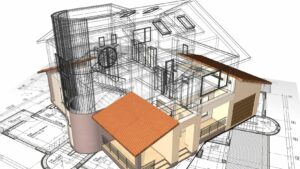Table of Contents
Toggle In the world of photography, few genres can match the grandeur and allure of architecture photography. It’s an art that encapsulates the beauty of man-made structures, transforming them into timeless pieces of visual delight. From towering skyscrapers to quaint cottages, every structure has a story to tell.
In the world of photography, few genres can match the grandeur and allure of architecture photography. It’s an art that encapsulates the beauty of man-made structures, transforming them into timeless pieces of visual delight. From towering skyscrapers to quaint cottages, every structure has a story to tell.
As we delve deeper into this fascinating world, we’ll uncover the secrets behind those stunning shots, the techniques that make them stand out, and the inspiration that drives these visual storytellers. So, get ready to embark on an enlightening journey through the lens of architectural photography.
Architecture Photos
Architecture photos thrive on precision and detail. Selecting the right equipment plays a critical part in achieving these artistic goals. The right camera, lens, and stabilization tools lay the foundation for capturing magnificent architectural masterpieces. Here’s what you must consider.
Choosing the Right Camera
The camera stands as the most crucial gear in architectural photography. Photographers swear by Digital Single-Lens Reflex (DSLR) cameras and mirrorless models. They’ve overtaken conventional compact cameras, offering vast control over variables like depth of field, exposure, and focus. Canon’s EOS 5D Mark IV and Nikon’s D850 reign the DSLR segment, given their advanced features in these areas.
Lenses That Elevate Your Shots
Lenses prove potent game-changers in the domain of architectural photography. Wide-angle lenses, for instance, offer a broad field of view, making them ideal for capturing expansive structures and interiors, such as the Sigma 12-24mm F4.5-5.6. Alternatively, tilt-shift lenses like Canon’s TS-E 24mm f/3.5L II control perspective distortion, keeping vertical lines straight and accurate.
Tripods and Other Stabilization Tools
In architecture photos, stabilizing your equipment for sharp, high-quality images is a non-negotiable. The use of tripods becomes essential here. They facilitate slower shutter speeds and prevent camera shake which possibly blurs the image. Models like the Manfrotto MT055XPRO3 boast sturdy construction and offer a high level of adjustability. Beyond tripods, remote shutter releases and bubble levels prove useful.
Composition Techniques in Architecture Photography
Unfolding the secrets of exceptional architectural photography, the comprehension of composition techniques is key. After equipping oneself with the right tools—DSLRs, mirrorless cameras, wide-angle lenses, tilt-shift lenses, and tripods—holistic knowledge of these techniques can help to create stunning architecture photos. Here are insights into some critical elements and principles that can amplify the effect of architectural images.
The Rule of Thirds and Leading Lines
 The rule of thirds is an indispensable technique. It involves dividing the frame into nine equal squares, envisioning a 3×3 grid, with central lines acting as guidemarks. By placing the key architectural elements at the intersections of these lines, or along them, photographers can render an effective balance and focal point in the image.
The rule of thirds is an indispensable technique. It involves dividing the frame into nine equal squares, envisioning a 3×3 grid, with central lines acting as guidemarks. By placing the key architectural elements at the intersections of these lines, or along them, photographers can render an effective balance and focal point in the image.
In architectural photography, light and shadows can be powerful allies. When used skillfully, they can assist in showcasing the texture and form of buildings, allowing the audience to appreciate the design aesthetics more intimately.
The Importance of Perspective and Angles
Creating unique perspectives of architectural subjects is integral to photography. It often involves embracing a range of heights, angles, and distances. For instance, shooting from a low angle can make a building appear tall and imposing, while capturing a close-up might showcase intricate details not visible from a distance.
Must Know
Taking architecture photos isn’t just about composition techniques or post-processing methods. It’s about capturing the essence of structures, from historical landmarks to modern buildings, and even the mystery of abandoned places. Crafting a compelling portfolio is vital, telling a story through images and engaging captions. It’s also crucial to harness the power of social media and online platforms. They’re not just for sharing work with a wider audience but also for connecting with potential clients. So whether it’s Instagram, Pinterest, Behance, Adobe Portfolio, Unsplash, or Pexels, don’t shy away from putting your best work out there. The world of architecture photography awaits your unique perspective. Remember, your photos aren’t just pictures; they’re stories waiting to be told.
